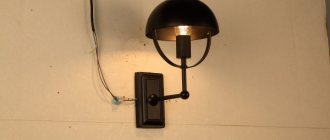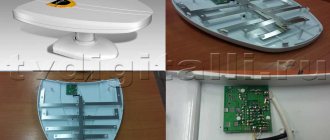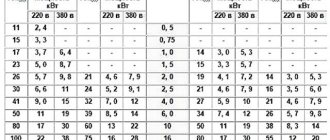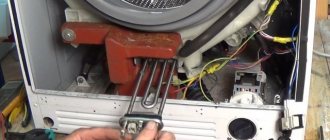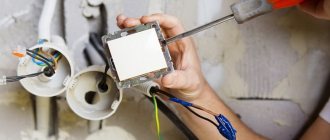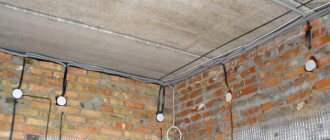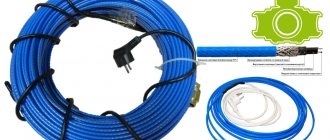An accurate count of the electricity used by consumers is carried out using a device that records and records consumption. Over time, the electrical flow meter fails or becomes obsolete. And then the homeowner is faced with a situation where replacing the electric meter becomes inevitable.
We will talk about the legal and technical nuances associated with the installation of a new metering device. Together with you, we will figure out in what order the old device should be replaced. We will advise you on what to do if you decide to do the replacement yourself.
Why is replacement required?
Installation of a new electricity meter may be required under the following circumstances:
. If the old meter has an accuracy class level of 2.0, it needs to be replaced.
There is an outdated model installed in the room- The energy supply organization plans to switch to a multi-tariff type of payment.
- The service life of the device has expired . On average, the service life of meters is 10 – 16 years. After the expiration date, the device must be replaced or verified. The cost of verification is almost equal to a new device. Therefore, it is more profitable to replace.
- The old device is damaged . Damage includes missing, damaged glass or cracks in the case.
- The installed device produces incorrect data . If the readings have changed sharply compared to the previous ones, it means that the meter has malfunctioned and needs to be replaced.
If the meter is broken, you cannot try to fix it yourself, since the seals of the manufacturer and the controlling organization will be broken. This will result in a fine.
From July 1, 2022, the Government of the Russian Federation plans to make it mandatory to install electronic meters that will be connected to an intelligent system. It makes it possible to read readings remotely: data from the device will be transmitted online to control centers and recorded. Citizens will be automatically issued bills.
The system allows you to monitor and evaluate energy consumption at different times of the day, compare readings, which will help save resources. New generation meters calculate electricity at three tariffs: in the morning the price of energy is the most expensive, in the afternoon – average, and at night – minimal. This system allows its owners to save money.
Additionally, the resource supplying organization will have the opportunity to remotely limit the supply of electricity to citizens who do not pay for the consumed kilowatts.
This practice has already been adopted in many countries around the world. Currently, smart meters are being installed in pilot regions. According to some reports, the complete transition to the new system will last until 2030.
Replacing the meter in stages
If the seal is no longer there, the owner must remove the old meter and decide on the location of the new one. To avoid problems when dismantling the old one and installing the new one, you should adhere to a clear plan:
- The first step is to turn off the input switch; in older versions it may not be present, but the PUE decree states that its presence is mandatory;
- Unscrew the screws and remove the cover;
- Using a measuring device, measure the voltage at the terminals of the electric meter;
- Most new devices have color markings, but if they are missing, use a felt-tip pen;
- Disconnect all wires from the meter;
- Unscrew the fastener and dismantling is complete;
- The new device is mounted in the reverse order, but if you are installing it in a new place, make new holes for the fasteners;
- The connection begins from the meter output; to clarify, review the instructions;
- If there are four outputs - phase and zero input and output, you should first connect the phase output, and then the zero output to the second connector;
- After installation is complete, turn on your home appliances to check the meter's operation. If the indicator shows “reverse” or the disk spins in the opposite direction, the wires were connected incorrectly.
Governing laws
Maintenance and replacement of electricity meters is regulated by Russian legislation:
- Art. 543 and art. 210 of the Civil Code of the Russian Federation;
- Housing Code;
- Federal Law No. 261 of November 32, 2009;
- Federal Law No. 102 of June 26, 2008;
- decision of the State Standard of the Russian Federation;
- Decrees of the Government of the Russian Federation No. 530 and No. 491.
Difficult situations
Often more complex situations arise - a privatized apartment, and the location of the electric meter in the entrance. This is a controversial situation that each side interprets differently. Lawyers believe that the owner of privatized housing cannot be responsible for property located outside the walls of his apartment, and the energy sales company takes exactly the opposite position. In this case, the management company is responsible for the metering device.
If the apartment is privatized, it is advisable to move the metering device inside the apartment. These are small expenses that will eliminate many problems associated with damage (including intentional damage!) and theft of electricity meters.
The work of moving the meter inside a privatized apartment can be undertaken by 10 Kilovolt LLC.
Who pays
Until recently, responsibility for replacing the meter rested solely with the owner of the premises. On July 1, 2020, Government Decree No. 554 of April 18, 2020 “On amendments to certain acts of the Government of the Russian Federation on improving the organization of electrical energy metering” came into force. After the adoption of this law, the payment procedure depends on the category of premises.
- In public housing . According to the Civil Code of the Russian Federation, replacing meters is the responsibility of the owner of a residential premises. When a tenant lives in an apartment under a social tenancy agreement, the owner of the apartment is the municipality. Replacing the meter and paying for the work must be done by the authorities. In reality, management and energy sales companies require payment for the replacement of the responsible employer, citing the fact that the responsible employer is also a subscriber of the energy supply company. But according to Art. 539 of the Civil Code of the Russian Federation, the subscriber in this case must be the management company. Therefore, replacement and payment for work on replacing electric meters in municipal housing must be carried out by the management company.
- At the entrance. According to Decree of the Government of the Russian Federation No. 491, electricity meters located on landings in the entrances of apartment buildings are common property. Accordingly, all work and expenses for replacing electric meters must be carried out by the management company in whose department the residential building is located. At the same time, the law stipulates the possibility of payment for work by the owner of the apartments, if such a provision is specified in the agreement between the owner of the residential premises and the management company.
- In his own apartment, including a privatized one, the owner of the residential premises must ensure the safety and integrity of electricity meters, as well as their maintenance. Replacing outdated, broken or non-compliant electricity meters is the responsibility of the owner. The expenses are fully covered by him.
- In a private house . In this case, the owner pays the cost of replacement; to ensure access for the inspector, meters in private houses are installed only outside the house.
If the management company requires payment of expenses by the responsible tenant of municipal housing, you should contact the housing inspectorate with a complaint about illegal actions.
In what cases is it better to call a specialist?
In some situations, it is better to entrust electrical dismantling to a specialist. This mainly applies to cases when the home owner does not understand electrical engineering at all or is not confident in his knowledge. The reason may be the warranty conditions for the electric meter. If they indicate that only a specialist should dismantle the device, then it is better to call him rather than try to remove the device yourself. The fact is that the warranty may otherwise be voided, and repairs will have to be carried out at your own expense.
The electrician will charge the owner of the house or apartment a fixed amount of payment for the service of replacing the meter. At the same time, you can be sure that the metering device is dismantled correctly.
Dismantling an electric meter is a simple procedure that anyone can do and requires minimal knowledge in electrical engineering.
However, in addition to the skills of an electrician, you should not neglect obtaining the appropriate permits to remove the device. This is an important point in the dismantling process, since unauthorized intervention threatens the homeowner with serious financial losses. Useful article? Rate and share with friends!
Procedure
The first step towards replacing an electric meter is to submit an application to the management company or energy supply organization. It all depends on who is the energy supplier to a particular room. It’s easy to figure out where to go—just look at your electricity receipt. The coordinates and necessary contacts are given there.
Notification of a planned replacement can be submitted in person, by email or by registered mail via Russian Post.
Expert opinion
Makhinov Vladimir Konstantinovich
Electrical Communications Specialist
There is no statutory form of notification, so it is drawn up in free form. For example, like this:
“Due to the approaching date of the scheduled verification, I notify you of my intention to replace the electricity meter myself at the address: ……. Estimated meter replacement date: 03/28/2021.”
In some cities, it is possible to submit an application online on the website of the energy supply company. In the form that opens, you will need to fill in the necessary information. After submitting your application, a specialist will contact you and set a date for changing the device.
The application must be accepted and reviewed by the relevant organization within 15 days. In practice this happens earlier. After agreement with the owners of the premises, a specialist will be sent to the specified address, who will remove the old device, install a new one and draw up a corresponding report. This document will serve as the basis for the possibility of paying for electricity according to new indications.
If you do not send advance notice of the intention to replace and remove the old device, marketers may regard this as theft.
How to stop the electricity meter
The company's representative office responded by connecting additional dynamos to the system in order to disable the illegally connected equipment. The problem of electricity theft is still relevant today. According to a recent study, global losses from the theft of electrical energy in the year amounted to approximately. India took first place with $16.2 billion, Brazil second with $10.5 billion, and Russia with $5.1 billion in third place. The adoption of new smart grids and smart meters, as well as the introduction of new technologies, improves the system for detecting electricity theft. Common methods of stealing electricity There are quite a large number of ways to steal electrical energy. The simplest of them can be called connecting to the power supply line to the electric meter or bypassing it. More complex schemes, as a rule, are aimed at reducing the amount of energy measured by an electric meter by making changes to its connection circuits or interfering with the operating process of the electric meter itself. External changes include: reversing the phase-neutral connections, completely disconnecting the neutral wire, ensuring that the current flows through the ground and not through the neutral, disconnecting one of the phase wires from the electric meter.
How to change it yourself
If you decide to install a new meter yourself, notification to the sales company is carried out in the same way.
After dismantling the old device, you can begin installation, taking into account the following recommendations:
The installation height is regulated within 0.8÷1.7 m from ground level; depending on the model of devices, they must be installed in special housings, common electrical panels or boxes.- Only electricians who have permission to perform work on lines with voltages up to 1000 V have the right to perform this type of work.
- You need to purchase and install meters that have state certification. Not all device manufacturers have such a document, since it is difficult to obtain. Before purchasing an electric meter, ask representatives of energy companies for a list of certified manufacturers.
- To service 380 Volt power networks, you will need to purchase a three-phase device.
- If you want to install two meters, you will need to obtain permission from the supplier. Typically, this method of paying for electricity is not approved. A similar permit will have to be obtained if there is a desire to install an additional meter in a communal apartment.
- In dilapidated houses or other similar buildings, meters can only be installed on a solid foundation. It must be provided in advance, otherwise the specialist may refuse to install the device due to the risk of fire or electric shock.
After self-installation, you will need to install a seal on the new device. Please note that only official representatives of energy companies have the right to register and seal meters; they will have to be called in any case. Practice shows that they often react negatively to the fact that their additional income is taken away from them, and can put forward various justifications for refusing registration and sealing. Therefore, it is better to agree on this issue in advance.
Installation of single-phase
Most modern meters are produced in a universal installation option, that is, they are mounted on special mounting rails in boxes without the use of hardware. The boxes have DIN rails - modular elements on which protection, metering and distribution equipment is mounted. They can be mounted or built-in. There must be a zero bus for connecting all neutral wires of electrical wiring and equipment.
In the store, unpack the device and, in the presence of the seller, inspect the case for mechanical damage. Please note that there is a manufacturer's license, a state trustee seal and a Quality Control Department seal. If something is missing or damaged, you should not purchase such a meter, since you will never be able to officially register and seal it.
The seller must put a mark in the passport about the time of purchase and guarantees.
At the same time, purchase electrical automatic protection fittings; for this you need to know by what criteria it is selected.
Installation procedure:
- Box mounting. There are many different types of them, differing in the degree of sealing, reliability of anti-vandal protection, linear dimensions, body material, list of internal fillings. Choose the best option for yourself. Securely fix the housing to the surface. On the back wall of the boxes there are technological holes for fastening; depending on the material of the wall, use self-tapping screws, dowels or hanging hooks. The back cover can be accessed after removing the internal protective cover.
- Install a two-pole circuit breaker inside the box - the main protection of the meter from overload and ultra-high short circuit currents.
- The PUE rules require the mandatory presence of an RCD. If you need to change the nominal parameters of the automation, use a special adjusting screw with a scale of indicators. The screw is driven by an ordinary screwdriver. To secure the machine to the rail, there is a special latch on its rear wall.
- Secure the meter to the bus using the latch. The latches and bars have standard sizes, which increases their versatility.
- Install single-pole circuit breakers. Ideally, it is recommended to install them on each floor of the cottage, bathhouse, utility rooms, garage, and workshop. Sometimes hotel machines are connected to every powerful electrical appliance. This ensures maximum safety indoors.
- Before connecting the meter to the wiring, you need to remove the protective cover of the meter; there is a connection diagram on the back side. When you remove the meter cover, you will see four clamps: two for input and output phases and two for input and output zero.
- Prepare jumpers. It is better to trim them with a margin - it is never too late to reduce the length, but it is impossible to increase it. The length of the cleaned ends of the jumpers on the meter and machine sides should be different and it depends on the size of the clamps. Jumpers must not be inserted with force.
- Connect the power wires to the main circuit breaker, turn off the circuit breaker. Check with a tester that the machine operates correctly. Remember that the neutral wire should only be blue; for the phase wire, you can use wires of any color.
- Connect the phase output on the machine with a jumper to the phase input on the meter. Make sure that the wire insulation does not get under the clamps. First, tighten the upper bolt of the clamp, check the reliability of the fastening by pulling the wire: it should not wobble or pull out. Tighten the bottom bolt and repeat tightening both bolts several times. The connection must be as reliable as possible; after installing and sealing the cover, access to the contacts to correct errors will be impossible; you will have to call an electrician.
- Connect the zero jumper. Install a zero jumper from the machine to the meter. The insulation of jumpers should never touch; this applies to all wires, both phase and neutral.
- Connect the phase coming from the meter to the first single-pole circuit breaker. Make jumpers between the installed machines. Then connect the zero output from the meter with a wire to the zero bus of the box.
Finally, you can close the lid and call an employee to check, seal and register. After this, permission is issued to connect electrical consumers to the power supply. Next, the wiring is connected with a phase wire to each single-pole circuit breaker, and a zero wire to the zero busbar, and wiring is done throughout the buildings and premises.
How to connect three-phase
The connection algorithm is practically no different from the described circuit for single-phase meters. There are differences only between types of functioning.
The devices are designed for a current flow of no more than 100 A, the maximum power of all consumers is no more than 60 kW. Such meters are most often used for private buildings with a large number of different consumers. The connection is made through current transformers at the outlet of the meter. Their parameters are selected taking into account the maximum power consumption.
Each phase has its own step-down current transformer; most often they are connected as a star; delta is rarely used. There are three terminals for each phase: for the supply wire of the current circuit, for the voltage wire and for the load wire of the current circuit.
Connection order:
- Connect the load wire . Loosen both screws of the single-phase power wire terminal, strip off the insulation, and insert the wire into the terminal. Tighten the top bolt, then the bottom, check the security and repeat the clamp again. The stripped section of the wire must be smooth; do not cut it while stripping the insulation. Do not allow insulation to get into the terminal. Similarly, connect the remaining terminals in phases.
- Apply power to the meter . If everything is done correctly, the indicator on the front panel will light up. When a load is connected, the mechanism begins to rotate and its readings change. The readings are multiplied by the transformation ratio of the connected current transformers; the coefficients must be indicated in a special window on the connection block cover.
- Replace the block cover and secure it with screws . Now you can call a representative for inspection, sealing, registration and issuance of permission to use.
How to connect an electric meter correctly
Before connecting, you need to make sure that there is no voltage on the metal panel, and also record the readings of the electric meter, inspect the appearance and make sure that the seals are intact.
Let's consider in order how to connect an electricity meter, depending on the model.
Installation of a single-phase device
Independent replacement of electrical single-phase meters is carried out in the following sequence:
- inspection of the external condition of the electric meter;
- checking the integrity of all seals on the metering device and on the terminal assembly;
- short-circuit the secondary transformer winding at the current terminals;
- check the absence of current in the electrical circuit of the metering device;
- sequentially disconnecting all conductors of the voltage circuit at the terminal assembly using insulating caps;
- removing the clamping cover from the electric meter box;
- checking that there is no voltage at the terminals and loosening the contact screws;
- unscrewing fasteners and dismantling the meter;
- installation of a new meter and screwing of fasteners;
- introducing voltage and current circuit conductors into the terminals of the electric meter, as well as clamping screws;
- installation of the clamping cover and sealing.
Connection diagram for a single-phase electric meter
At the final stage, the insulating caps are alternately removed and the secondary windings on the current transformer are short-circuited.
Connecting three-phase models
When choosing the optimal circuit for connecting three-phase 380V electricity meters, you need to focus on the model of the control device. Three-phase models of metering devices also work in standard 220V electrical networks, and are connected according to the following diagrams:
- direct connection option;
- semi-indirect connection option;
- indirect connection option.
Devices for direct-flow energy metering are designed to pass current within 100A, which limits their use to a power of 60 kW. Such electric meters are distinguished by terminal contacts for connecting wires with a small cross-section.
Three-phase meter connection diagram
The simplest option is direct or direct connection. In this case, the insulation on the supply conductors is stripped and connected to the automatic protective switch, after which three phase conductors are connected to the terminal contacts. The neutral conductor is connected to a pair of remaining unused contacts.
After the metering device, it is mandatory to install three-pole circuit breakers.
Installation safety rules
When replacing an indoor electricity meter, the following rules must be observed:
- Do not leave exposed wires, which could cause a short circuit and electric shock to a person.
- Twisting of wires is not permitted. All of them must be connected in the distribution board through terminal boxes. The wires must be carefully laid and connected with dielectric bundles into a bundle.
- You need to turn on the meter when the circuit breaker after the meter is turned off, that is, without load.
- The metal structure where the device is installed must be grounded.
- After turning on the machine, the “Network” indicator should light up. The “Reverse” icons, etc. should not be lit, otherwise the connection is incorrect.
- When the outgoing machine is turned off, the LED recording the electricity consumption should not blink.
Expert opinion
Makhinov Vladimir Konstantinovich
Electrical Communications Specialist
The nature of the indication depends on the design of the electric meter and its type. Before starting work, carefully read the operating instructions.
Classifications and types of meters
Residents of houses are interested in how to change the electricity meter in an apartment, not knowing that there are different types of elements. First of all, they differ in their work:
Replacing an electric meter
- induction,
- electronic.
There are standard and high precision models. Single-phase and three-phase options are available for electrical networks. If you look at the design, they offer ordinary, multi-functional products.
Electronic type
Common questions and special cases
The management company replaced the meter in our absence. We have a three-tariff system, put into operation 3 years ago. The management company carried out a massive replacement and installed a two-tariff system. Are these actions legal?
No, not legal. Write a complaint to the energy supply organization outlining your requirements, notifying the energy workers that if this issue is not resolved within 10 days, you reserve the right to file a complaint with the prosecutor's office, Rospotrebnadzor and the Housing Inspectorate, followed by legal action.
I have a house and a building on my property. Is it possible to install an additional line and connect a separate electric meter?
No. If the site is single and is owned by one owner, you can connect only once. If you want two lines and different meters, you need to divide the plot into two with different cadastral numbers.
How do you pay for electricity if the meter is stolen?
Theft of the device will entail a change in the payment scheme for consumed electricity. Payment will be made in accordance with clause 59 of RF PP 354, that is, based on average consumption. This procedure will be determined for the period from the date the theft of the electric meter was recorded until the date of filing the application for installation (sealing) of a new meter.
Is the homeowner required to be present when the electric meter is replaced?
If the device is in the public domain, the presence of the owner when replacing it is not necessary. In any case, the meter will be considered put into operation after drawing up the report, and its readings will be taken into account in calculations.
Do I need to store the old meter after replacement?
No. All data is indicated in the act, so the old device will no longer be needed.
Replacing an indoor electricity meter may be planned or unplanned. But in any case, it is strictly regulated and registered with the energy company. Violation of order is punishable by a substantial fine.
Organizational issues of replacing an electric meter
If you discover a malfunction of your electric meter (see Introduction), you must notify the organization that provides you with energy supply services, also reporting the readings of the device.
As already noted, you can apply for a replacement for reasons not related to the failure of the meter.
In any case, you must write a statement to the organization to which you pay for electricity. When submitting an application, you need a passport and proof that you are the owner of the property. You may need to provide copies of these documents. If someone will submit the application on your behalf, they must have a power of attorney from you to perform this action.
The organization will send its appropriately qualified specialist to you, who will replace it and put the meter into operation, including sealing it and drawing up a corresponding replacement report. One copy of the act remains with the consumer.
To install a new meter, you must purchase it yourself. You can purchase any model that is in the register of certified devices.
The meter must have state verification seals with the stamp of the verification organization and the verification date. In addition, no more than two years should pass from the manufacture of the meter to the date of its commissioning.
The technical side of replacing an electric meter
Below we will look at instructions on how to correctly replace a single-phase electricity meter, including with your own hands.
Sequencing.
- Disconnect the installed electric meter.
- Check that there is no voltage at the inputs and outputs of an already installed electric meter, as well as on the metal of the cabinet where the meter is installed.
- Disconnect the conductors from the electrical meter connectors
- Dismantle the electric meter being replaced (without breaking its seal)
- Install a new electric meter.
- Connect the input and output wires to the connectors of the electric meter (connectors are numbered from left to right): connector 1 – “phase” input from the power supply network
- connector 2 - “phase” output to the apartment (house)
- connector 3 – “zero” input from the power supply system.
- connector 4 – “zero” output to the apartment (house).
This completes the installation of the electric meter. Then it needs to be sealed and put into operation. These issues will be discussed below.
In addition, in order to obtain the right to replace the meter yourself, and not with the help of an electrician from an authorized organization, you must have the third qualification group (admission group) valid at the time of replacement in accordance with the PTE EP and PTB. If you don't know what it is, then you don't need to replace it yourself.
Design and commissioning
After installing the electric meter, an application is again submitted to call the controller or an authorized executor. The commissioning procedure consists of several stages.
- Checking the metering device data for compliance with the manufacturer’s technical documentation.
- Testing the counting mechanism for functionality.
- Installation of control and antimagnetic seals.
- Recording indications for the start of work after sealing.
- Drawing up a commissioning report indicating the date of the next verification.
To register a new device, the owner submits an application to the management company, a copy of the passport and registration certificate of the meter, and a commissioning certificate. Documents must be provided within a month from the date of connection.
The management company is obliged to consider the application within 3 working days. Registration of commissioning is established no later than 15 days from the date of submission of the application. If the controller does not accept the device and does not draw up a report within the agreed time frame, the date of entry and recording of the indicators is considered to be the date specified in the application for registration.
Preparation of documents
Before moving directly to replacing the electricity meter, you need to clearly understand that, even if it was purchased with the consumer’s money, removing seals and interfering with the design of this device is prohibited without the permission of the electricity supply company, that is, Energosbyt.
If the meter is the property of the electricity supplier, it must be replaced free of charge. However, there are cases when the electric meter is the property of the owner. In this case, all work, including replacement, will be paid for by the consumer.
You can learn more about who should pay for replacing the electric meter in our article.
In order to replace an old electricity meter with a new one, you must:
- Take a passport of a citizen of the Russian Federation and documents confirming ownership of the premises that are connected to the electrical network. If the replacement is initiated or occurs without the owner, then you need to arm yourself with a power of attorney.
- Take them to the supplier and write a statement about the need to replace the electric meter.
In turn, the energy supplier must record it and send an inspector, who will draw up an appropriate report on the need for replacement, remove the seals from the electric meter, and record the latest readings.
From now on, the calculation of the electricity consumed by the client will be carried out according to the average monthly consumption or standard. We talked about how electricity is calculated without a meter in a separate article. You can install, and in this case replace, the meter yourself or pay the energy supplier for such a service. The most important thing is to correctly connect and securely fasten the electric meter, as well as connect the current-carrying parts according to the diagram indicated in the meter’s passport. It is best to purchase an individual electric meter for an apartment or private house from the company that supplies electricity. Often they have such a product in stock, it is certified and working.
If you buy a meter at the market or in a store, you should make sure that the meter has a passport and a government seal, otherwise it may not work or cannot be installed without prior verification.
Requirements for the presence and content of state verification seals are established by the document “On approval of the Procedure for verification of measuring instruments, requirements for the verification mark and the content of the verification certificate (as amended as of December 28, 2022).” For single-phase newly installed electricity metering devices, the verification period should be no more than 2 years. This requirement is specified in the PUE clause 1.5.13 (Chapter 1.5).
We talked about how to choose an electricity meter and which one is better in a separate article.
Difficult situations
Often more complex situations arise - a privatized apartment, and the location of the electric meter in the entrance. This is a controversial situation that each side interprets differently. Lawyers believe that the owner of privatized housing cannot be responsible for property located outside the walls of his apartment, and the energy sales company takes exactly the opposite position. In this case, the management company is responsible for the metering device.
If the apartment is privatized, it is advisable to move the metering device inside the apartment. These are small expenses that will eliminate many problems associated with damage (including intentional damage!) and theft of electricity meters.
The work of moving the meter inside a privatized apartment can be undertaken by 10 Kilovolt LLC.
